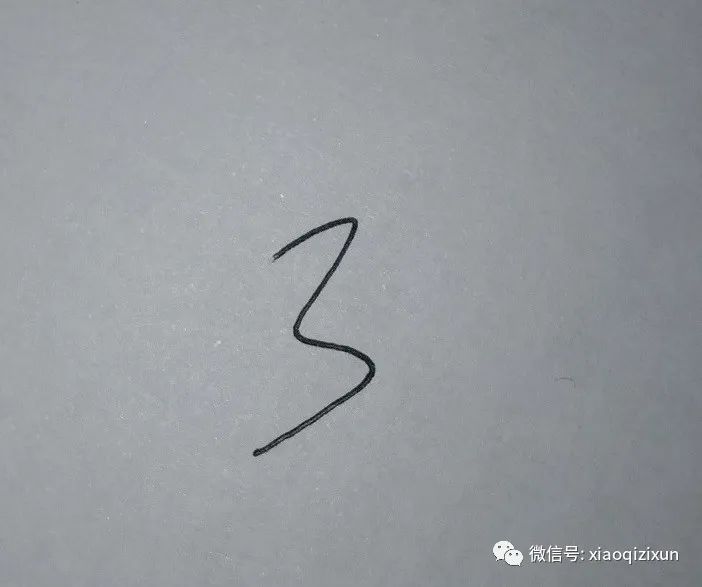训练MNIST数据集,并保存训练模型
# Python3
# 使用LeNet5的七层卷积神经网络用于MNIST手写数字识别
import tensorflow as tf
from tensorflow.examples.tutorials.mnist import input_data
mnist = input_data.read_data_sets("MNIST_data", one_hot=True)
# 为输入图像和目标输出类别创建节点
x = tf.placeholder(tf.float32, shape=[None, 784]) # 训练所需数据 占位符
y_ = tf.placeholder(tf.float32, shape=[None, 10]) # 训练所需标签数据 占位符
# *************** 构建多层卷积网络 *************** #
# 权重、偏置、卷积及池化操作初始化,以避免在建立模型的时候反复做初始化操作
def weight_variable(shape):
initial = tf.truncated_normal(shape, stddev=0.1) # 取随机值,符合均值为0,标准差stddev为0.1
return tf.Variable(initial)
def bias_variable(shape):
initial = tf.constant(0.1, shape=shape)
return tf.Variable(initial)
# x 的第一个参数为图片的数量,第二、三个参数分别为图片高度和宽度,第四个参数为图片通道数。
# W 的前两个参数为卷积核尺寸,第三个参数为图像通道数,第四个参数为卷积核数量
# strides为卷积步长,其第一、四个参数必须为1,因为卷积层的步长只对矩阵的长和宽有效
# padding表示卷积的形式,即是否考虑边界。"SAME"是考虑边界,不足的时候用0去填充周围,"VALID"则不考虑
def conv2d(x, W):
return tf.nn.conv2d(x, W, strides=[1, 1, 1, 1], padding='SAME')
# x 参数的格式同tf.nn.conv2d中的x,ksize为池化层过滤器的尺度,strides为过滤器步长
def max_pool_2x2(x):
return tf.nn.max_pool(x, ksize=[1, 2, 2, 1], strides=[1, 2, 2, 1], padding='SAME')
#把x更改为4维张量,第1维代表样本数量,第2维和第3维代表图像长宽, 第4维代表图像通道数
x_image = tf.reshape(x, [-1,28,28,1]) # -1表示任意数量的样本数,大小为28x28,深度为1的张量
# 第一层:卷积
W_conv1 = weight_variable([5, 5, 1, 32]) # 卷积在每个5x5的patch中算出32个特征。
b_conv1 = bias_variable([32])
h_conv1 = tf.nn.relu(conv2d(x_image, W_conv1) + b_conv1)
# 第二层:池化
h_pool1 = max_pool_2x2(h_conv1)
# 第三层:卷积
W_conv2 = weight_variable([5, 5, 32, 64])
b_conv2 = bias_variable([64])
h_conv2 = tf.nn.relu(conv2d(h_pool1, W_conv2) + b_conv2)
# 第四层:池化
h_pool2 = max_pool_2x2(h_conv2)
# 第五层:全连接层
W_fc1 = weight_variable([7 * 7 * 64, 1024])
b_fc1 = bias_variable([1024])
h_pool2_flat = tf.reshape(h_pool2, [-1, 7*7*64])
h_fc1 = tf.nn.relu(tf.matmul(h_pool2_flat, W_fc1) + b_fc1)
# 在输出层之前加入dropout以减少过拟合
keep_prob = tf.placeholder("float")
h_fc1_drop = tf.nn.dropout(h_fc1, keep_prob)
# 第六层:全连接层
W_fc2 = weight_variable([1024, 10])
b_fc2 = bias_variable([10])
# 第七层:输出层
y_conv=tf.nn.softmax(tf.matmul(h_fc1_drop, W_fc2) + b_fc2)
# *************** 训练和评估模型 *************** #
# 为训练过程指定最小化误差用的损失函数,即目标类别和预测类别之间的交叉熵
cross_entropy = -tf.reduce_sum(y_*tf.log(y_conv))
# 使用反向传播,利用优化器使损失函数最小化
train_step = tf.train.AdamOptimizer(1e-4).minimize(cross_entropy)
# 检测我们的预测是否真实标签匹配(索引位置一样表示匹配)
# tf.argmax(y_conv,dimension), 返回最大数值的下标 通常和tf.equal()一起使用,计算模型准确度
# dimension=0 按列找 dimension=1 按行找
correct_prediction = tf.equal(tf.argmax(y_conv,1), tf.argmax(y_,1))
# 统计测试准确率, 将correct_prediction的布尔值转换为浮点数来代表对、错,并取平均值。
accuracy = tf.reduce_mean(tf.cast(correct_prediction, "float"))
saver = tf.train.Saver() # 定义saver
# *************** 开始训练模型 *************** #
with tf.Session() as sess:
sess.run(tf.global_variables_initializer())
for i in range(1000):
batch = mnist.train.next_batch(50)
if i%100 == 0:
# 评估模型准确度,此阶段不使用Dropout
train_accuracy = accuracy.eval(feed_dict={x:batch[0], y_: batch[1], keep_prob: 1.0})
print("step %d, training accuracy %g"%(i, train_accuracy))
# 训练模型,此阶段使用50%的Dropout
train_step.run(feed_dict={x: batch[0], y_: batch[1], keep_prob: 0.5})
saver.save(sess, './save/model.ckpt') #模型储存位置
print("test accuracy %g"%accuracy.eval(feed_dict={x: mnist.test.images [0:2000], y_: mnist.test.labels [0:2000], keep_prob: 1.0}))
手写数字图像预处理
然后自己手写数字
利用Python和OpenCV进行图像预处理
需要安装Python的OpenCV接口(安装命令:pip install opencv-python)
MNIST要求数据为28*28像素,单通道,且需要二值化。
import cv2
global img
global point1, point2
def on_mouse(event, x, y, flags, param):
global img, point1, point2
img2 = img.copy()
if event == cv2.EVENT_LBUTTONDOWN: #左键点击
point1 = (x,y)
cv2.circle(img2, point1, 10, (0,255,0), 5)
cv2.imshow('image', img2)
elif event == cv2.EVENT_MOUSEMOVE and (flags & cv2.EVENT_FLAG_LBUTTON): #按住左键拖曳
cv2.rectangle(img2, point1, (x,y), (255,0,0), 5) # 图像,矩形顶点,相对顶点,颜色,粗细
cv2.imshow('image', img2)
elif event == cv2.EVENT_LBUTTONUP: #左键释放
point2 = (x,y)
cv2.rectangle(img2, point1, point2, (0,0,255), 5)
cv2.imshow('image', img2)
min_x = min(point1[0], point2[0])
min_y = min(point1[1], point2[1])
width = abs(point1[0] - point2[0])
height = abs(point1[1] -point2[1])
cut_img = img[min_y:min_y+height, min_x:min_x+width]
resize_img = cv2.resize(cut_img, (28,28)) # 调整图像尺寸为28*28
ret, thresh_img = cv2.threshold(resize_img,127,255,cv2.THRESH_BINARY) # 二值化
cv2.imshow('result', thresh_img)
cv2.imwrite('./images/text.png', thresh_img) # 预处理后图像保存位置
def main():
global img
img = cv2.imread('./images/src.jpg') # 手写数字图像所在位置
img = cv2.cvtColor(img, cv2.COLOR_BGR2GRAY) # 转换图像为单通道(灰度图)
cv2.namedWindow('image')
cv2.setMouseCallback('image', on_mouse) # 调用回调函数
cv2.imshow('image', img)
cv2.waitKey(0)
if __name__ == '__main__':
main()
运行上方代码,利用鼠标框选自己手写数字区域,完成图像预处理,可得到如下图像
手写数字识别
完成图像预处理后,即可将图片输入到网络中进行识别
from PIL import Image
import tensorflow as tf
import numpy as np
im = Image.open('./images/text.png')
data = list(im.getdata())
result = [(255-x)*1.0/255.0 for x in data]
print(result)
# 为输入图像和目标输出类别创建节点
x = tf.placeholder("float", shape=[None, 784]) # 训练所需数据 占位符
# *************** 构建多层卷积网络 *************** #
def weight_variable(shape):
initial = tf.truncated_normal(shape, stddev=0.1) # 取随机值,符合均值为0,标准差stddev为0.1
return tf.Variable(initial)
def bias_variable(shape):
initial = tf.constant(0.1, shape=shape)
return tf.Variable(initial)
def conv2d(x, W):
return tf.nn.conv2d(x, W, strides=[1, 1, 1, 1], padding='SAME')
def max_pool_2x2(x):
return tf.nn.max_pool(x, ksize=[1, 2, 2, 1], strides=[1, 2, 2, 1], padding='SAME')
x_image = tf.reshape(x, [-1,28,28,1]) # -1表示任意数量的样本数,大小为28x28,深度为1的张量
W_conv1 = weight_variable([5, 5, 1, 32]) # 卷积在每个5x5的patch中算出32个特征。
b_conv1 = bias_variable([32])
h_conv1 = tf.nn.relu(conv2d(x_image, W_conv1) + b_conv1)
h_pool1 = max_pool_2x2(h_conv1)
W_conv2 = weight_variable([5, 5, 32, 64])
b_conv2 = bias_variable([64])
h_conv2 = tf.nn.relu(conv2d(h_pool1, W_conv2) + b_conv2)
h_pool2 = max_pool_2x2(h_conv2)
W_fc1 = weight_variable([7 * 7 * 64, 1024])
b_fc1 = bias_variable([1024])
h_pool2_flat = tf.reshape(h_pool2, [-1, 7*7*64])
h_fc1 = tf.nn.relu(tf.matmul(h_pool2_flat, W_fc1) + b_fc1)
# 在输出层之前加入dropout以减少过拟合
keep_prob = tf.placeholder("float")
h_fc1_drop = tf.nn.dropout(h_fc1, keep_prob)
# 全连接层
W_fc2 = weight_variable([1024, 10])
b_fc2 = bias_variable([10])
# 输出层
# tf.nn.softmax()将神经网络的输层变成一个概率分布
y_conv=tf.nn.softmax(tf.matmul(h_fc1_drop, W_fc2) + b_fc2)
saver = tf.train.Saver() # 定义saver
# *************** 开始识别 *************** #
with tf.Session() as sess:
sess.run(tf.global_variables_initializer())
saver.restore(sess, "./save/model.ckpt")#这里使用了之前保存的模型参数
prediction = tf.argmax(y_conv,1)
predint = prediction.eval(feed_dict={x: [result],keep_prob: 1.0}, session=sess)
print("recognize result: %d" %predint[0])




















 583
583











 被折叠的 条评论
为什么被折叠?
被折叠的 条评论
为什么被折叠?








